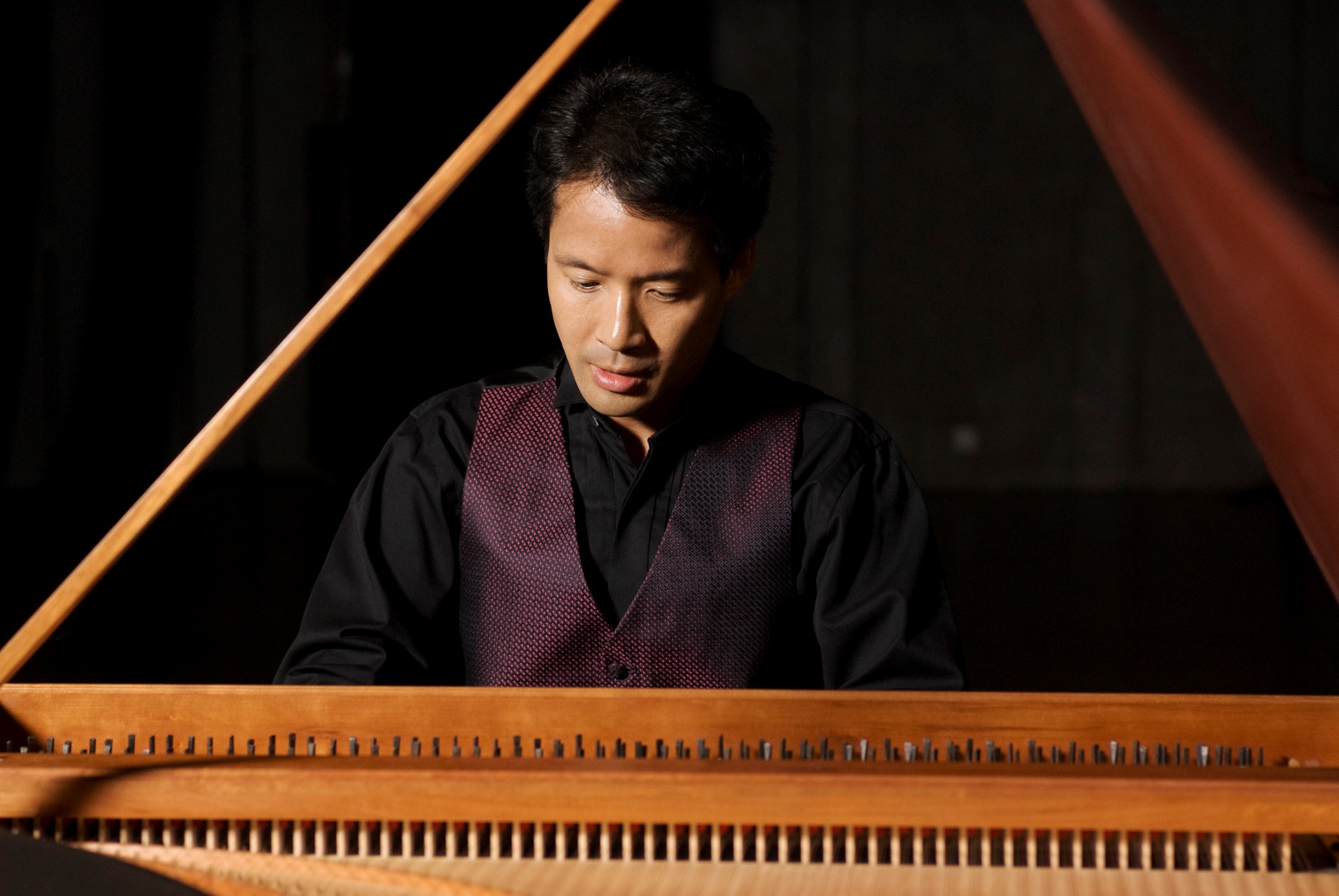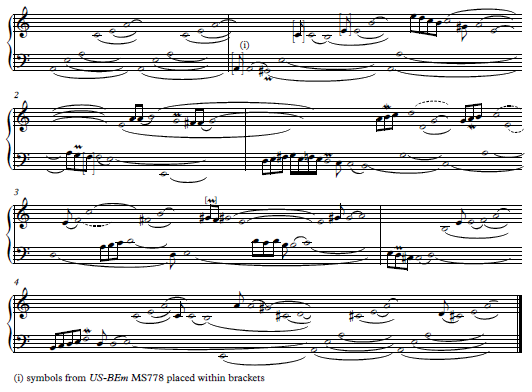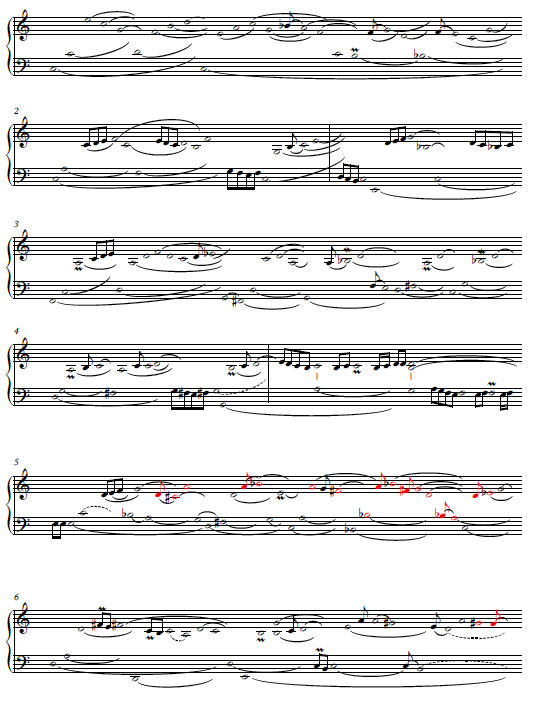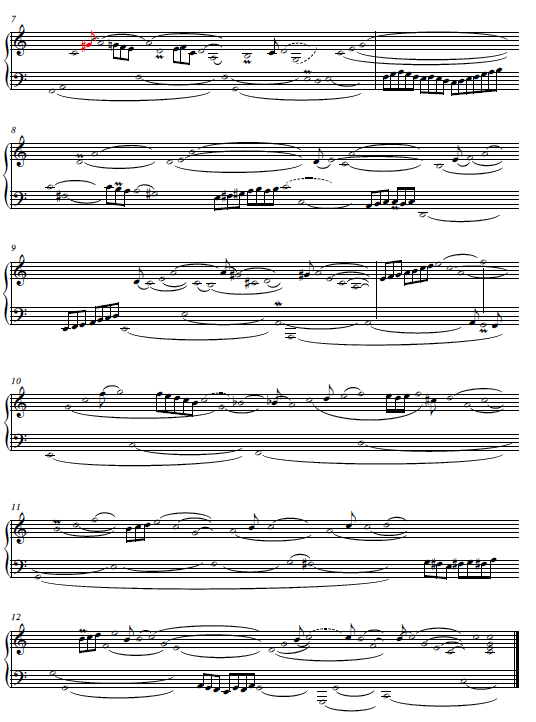Transcribing Couperin’s Preludes à la D’Anglebert: a Journey into the Creative Processes of the 17th-century Quasi-improvisatory Tradition
Read as PDF
Table of Contents
DOI: 10.32063/0509
David Chung
David Chung, harpsichordist and musicologist, performs extensively on the harpsichord in cities across Europe, North America and Asia. He has appeared in the Festival d’Ile-de-France, Geelvinck Fortepiano Festival, Cambridge Early Keyboard Festival, Hong Kong International Chamber Music Festival, Le French May Arts Festival and Hong Kong New Vision Arts Festival.
David received his education at the Chinese University of Hong Kong, the Royal Academy of Music, London and Churchill College, Cambridge. His scholarly contributions include articles and reviews in journals such as Early Music, Early Keyboard Journal, Eighteenth-Century Music, Journal of Seventeenth-Century Music, Music and Letters, Notes, and Revue de musicologie. His edition of nearly 250 keyboard arrangements of Jean-Baptiste Lully’s music is available from the Web Library of Seventeenth-Century Music (www.sscm-wlscm.org).
David is currently Professor of Music at Hong Kong Baptist University.
by David Chung
Music & Practice, Volume 5
Editions & Transcriptions
Background
For several decades, the interpretation of the preludes by ‘Monsieur Couperin’ (presumably Louis Couperin, c. 1626–1661) has sparked lively discussion among scholars and performers, owing largely to these pieces’ rhythmically free notation that has no regular bar-lines or specific rhythmic indications.[1] This unconventional ‘unmeasured’ notation, consisting essentially of semibreves and lines, has fascinated many players, both past and present (Figure 1).[2] However, these elaborate lines that Couperin apparently devised also present major challenges for modern musicians, due not only to their inherent ambiguities but also to inconsistencies, as found between Bauyn (Bibliothèque nationale de France, Rés. Vm7 674–5) and Parville (Berkeley, CA, Jean Gray Hargrove Music Library, University of California, MS 778), which are the two surviving sources of this repertory. To date, no firm consensus has been reached on either the nomenclature or the functions of these lines.[3] Unsurprisingly, various editors (Curtis 1970, Moroney 1985, Tilney 1991, Wilson 2003, Chapelin-Dubar 2010, Gustafson 2014) have developed their own, often divergent approaches to redrawing or interpreting Couperin’s lines.[4]
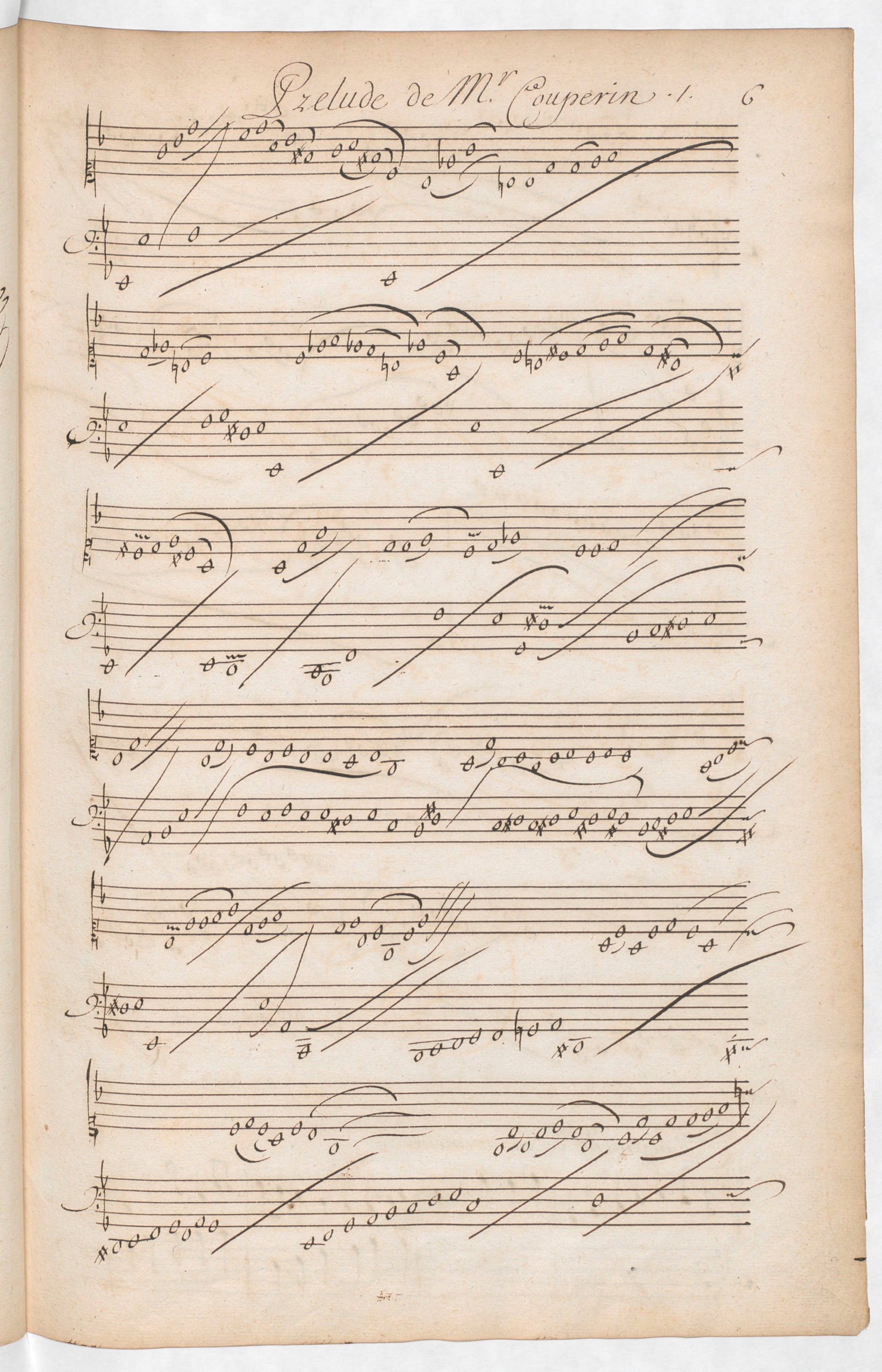
Figure 1 Bibliothèque nationale de France, Rés. Vm7 675, fol. 6r, Prelude de Mr. Couperin, opening. « Source gallica.bnf.fr / Bibliothèque nationale de France »
Perhaps in an attempt to remove some of the ambiguities of the unmeasured notation, Jean Henry d’Anglebert (1629-1691) took the bold step of converting three of his own preludes, first written down in unmeasured notation in his autograph (Bibliothèque nationale de France, Rés. 89ter), into a new, semi-measured notation for publication (1689). Following D’Anglebert, Louis-Nicolas Clérambault (in 1704), Gaspard Le Roux (in 1705) and other composers readily saw the benefits of this semi-measured notation, and had their own preludes inscribed in similar ways.[5] It seems likely that, if Couperin had had the opportunity to prepare his music for publication, he would have taken similar steps to clarify his intentions in print.
The present study has two main aims. First, it describes D’Anglebert’s procedures of transcribing his own preludes from unmeasured to semi-measured notation. Second, by transcribing Couperin’s preludes into semi-measured notation ‘à la D’Anglebert’, it evaluates the extent to which this semi-measured notation can inform a range of interpretative matters. The study focuses on two key questions: (1) What kinds of changes and revisions need to be made to transcribe the preludes into semi-measured notation? (2) What benefits can the semi-measured notation bring to the performer? To answer these questions, two preludes by Couperin (Moroney 1985, nos. 7 and 10), of different lengths and levels of sophistication, have been transcribed into semi-measured notation by applying D’Anglebert’s system of combining semibreves, quavers and semiquavers with curved and straight lines.
D’Anglebert’s techniques of converting his own preludes from unmeasured to mixed (semi-measured) notation
Three preludes by D’Anglebert, in G major, G minor and D minor, have survived in both the Bibliothèque nationale de France, Rés. 89ter and in the composer’s Pieces de clavecin (Paris, 1689). In his autograph manuscript, D’Anglebert notated his preludes using semibreves, together with a system of curved and straight lines.[6] This unmeasured notation is essentially the same as Couperin’s, as found in the Bauyn and Parville manuscripts.[7] As can be seen in the opening of D’Anglebert’s G major Prelude, both the autograph and the printed versions basically apply the same notes and ornaments (Examples 1a & 1b). However, by presenting his preludes with a ‘mixed’ notation (as in Example 1b), D’Anglebert significantly clarified the relationship between the structure and the musical details of the music.
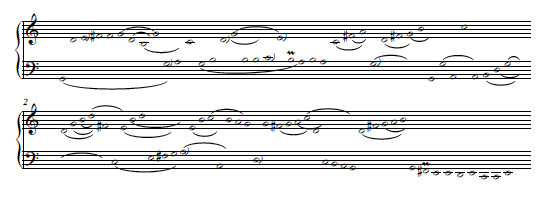
Example 1a Jean Henry D’Anglebert, Prelude in G major, opening, unmeasured version in F. Bibliothèque nationale de France, Rés. 89ter, fol. 67v.
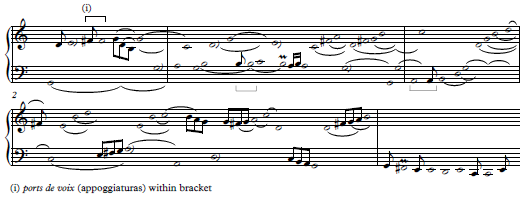
Example 1b Jean Henry D’Anglebert, Prelude in G major, opening, mixed-notation version in Pieces de clavecin (Paris, 1689), p. 1.
In general, D’Anglebert’s techniques for converting his preludes from unmeasured to mixed notation can be summarised as follows:
(1) In the mixed notation, D’Anglebert uses notes of three different values to reveal the structural hierarchy, in which the quavers and semiquavers signify notes of lesser structural importance. In fact, the semiquavers are mainly reserved for the prefixes and suffixes of trills. These different note values clarify the hierarchy of the harmonic structure, but do not specify the duration of the notes themselves.
(2) In his autograph (Bibliothèque nationale de France, Rés. 89ter), D’Anglebert uses only one simple trill symbol – a wavy line that was commonly found in manuscripts of the time (see Figure 2). In his 1689 print, the composer introduces additional symbols for more variety, such as the cadence (a trill preceded by a turn) and the tremblement appuyé (a trill that begins by leaning on the first note for some time) (see Example 2).[8]
(3) In the printed version, D’Anglebert introduces additional curves, apparently to give more precise indications of the held notes (see Example 2).
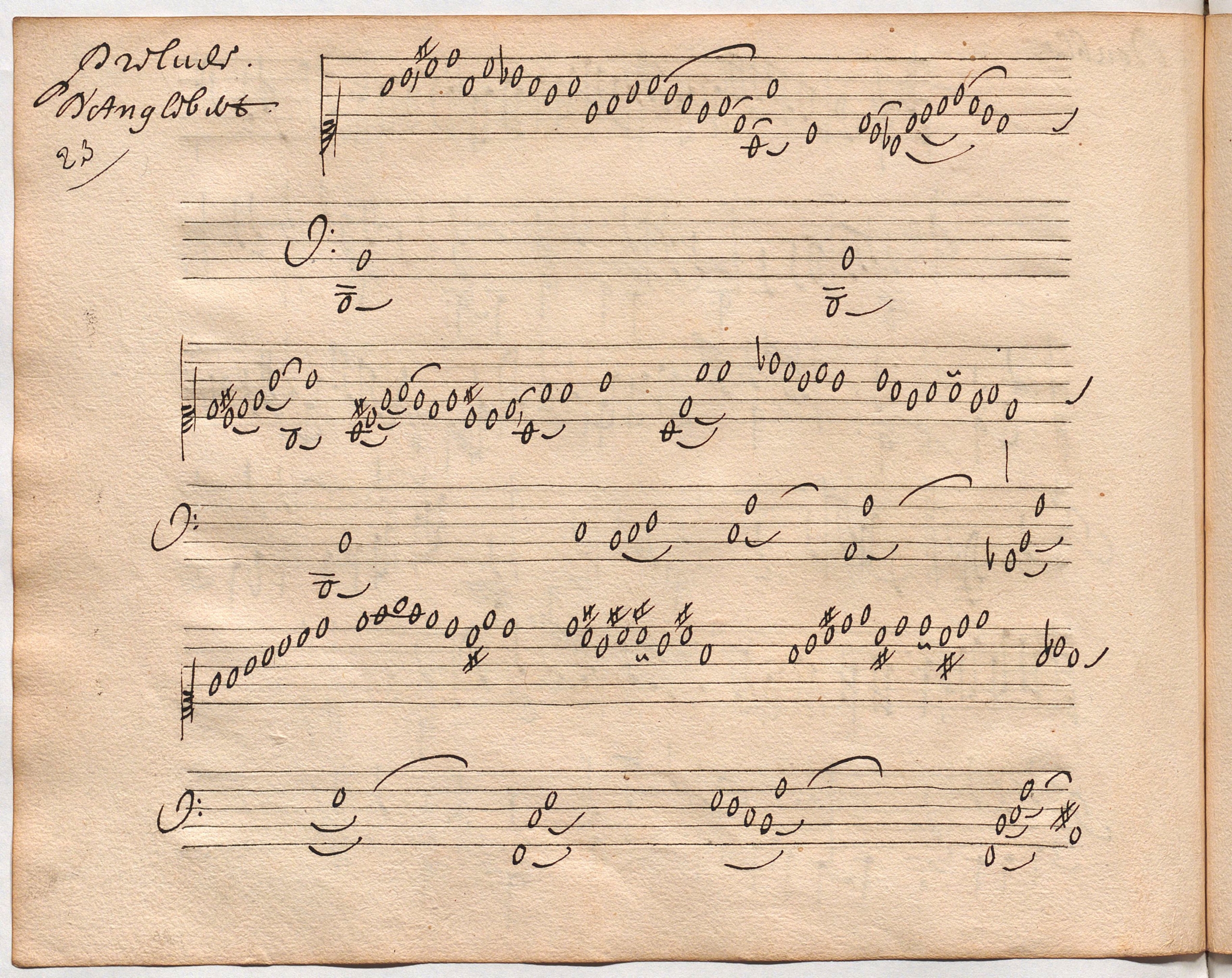
Figure 2 Bibliothèque nationale de France, Rés. 89ter, fol. 52v, Prelude D’Anglebert. « Source gallica.bnf.fr / Bibliothèque nationale de France »
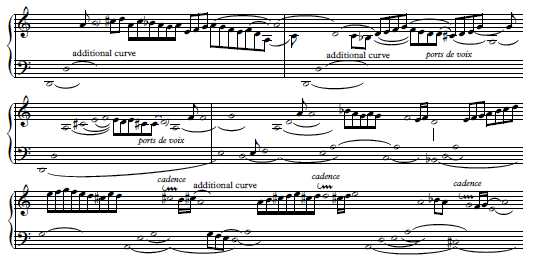
Example 2 Jean Henry D’Anglebert, Prelude in D minor, opening, after Pièces de clavecin (1689), p. 67.
(4) Ports de voix (i.e., appoggiaturas) are modified in several ways. A single port de voix is converted to a quaver. For double ports de voix, D’Anglebert seems to follow no fixed routine. Sometimes he modifies the first of the port de voix notes to a quaver, but at other times he does exactly the opposite (see Example 1 above). When ports de voix are preceded by a string of melodic notes, both ports de voix notes are likely to be converted to quavers (see Example 2, above). Overall, D’Anglebert creates a myriad of effects by embroidering his ports de voix in numerous fashions.
(5) In his autograph, D’Anglebert uses vertical lines to clarify the alignment of notes (see Figure 2 above). In his 1689 Pieces, he introduces additional straight lines, somewhat reminiscent of modern bar-lines, possibly to mark the ends of phrases. These lines suggest slight breaks of function, similar to the comma signs that were introduced by François Couperin, nephew of Louis, in his third book (1722).[9] François Couperin’s explanation is translated and then quoted in French below:
A new sign will be found, which appears thus ’ : it is used to mark the ending of Phrases, or of our Harmonic sentences, and to indicate that one must make a slight break at the end of a phrase before going on to the following one. Generally speaking, this is almost imperceptible, although when this little Silence is not observed, persons of taste feel that something is lacking in the performance: in a word, it is the difference between those who read everything straight through and those who pause at the full stops and commas …
On trouvera un signe nouveau dont la figure ’ : c’est pour marquer la terminaison des Chants, ou de nos Phrases harmoniques, et pour faire comprendre qu’il faut un peu séparer la fin d’un chant, avant que de passer à celuy qui le suit. Cela est presque imperceptible en general, quoy qu’en n’observant pas ce petit Silence, les personnes de gout sentent qu’il manque quelque chose à l’éxécution ; en un mot, c’est la diférence de ceux qui lisent de suite, avec ceux qui s’arêtent aux points et aux virgules. Ces silences se doivent faire sentir sans alterer la mesure.
Transcribing Louis Couperin’s preludes à la D’Anglebert
Couperin’s Prelude in A minor (Moroney no. 7) is simply entitled ‘Prelude de Monsr. Couperin’ in the Bauyn manuscript (Figure 3). The Parville version, which is almost identical, contains a few additional ornaments. This piece is the shortest prelude by Couperin; unsurprisingly, therefore, a number of scholars have chosen it as a test case in their efforts to transcribe Couperin’s rhythmically free notation into conventional notation. However, each scholar has found a different path via which to do so. Wood (1952) framed this prelude into the rhythm of a chaconne but, in doing so, cautioned that the music should be interpreted with ‘the elasticity, unevenness, accelerations and pauses that this music seems to demand’.[10] Ferguson (1975) freely edited the curves from Bauyn into modern ‘slurs’ and, while introducing bar-lines, constantly varied their lengths.[11] The transcriptions by Powell (1959) and Pfeiffer (1979) also display considerable flexibility in terms of both metre and rhythm.[12]
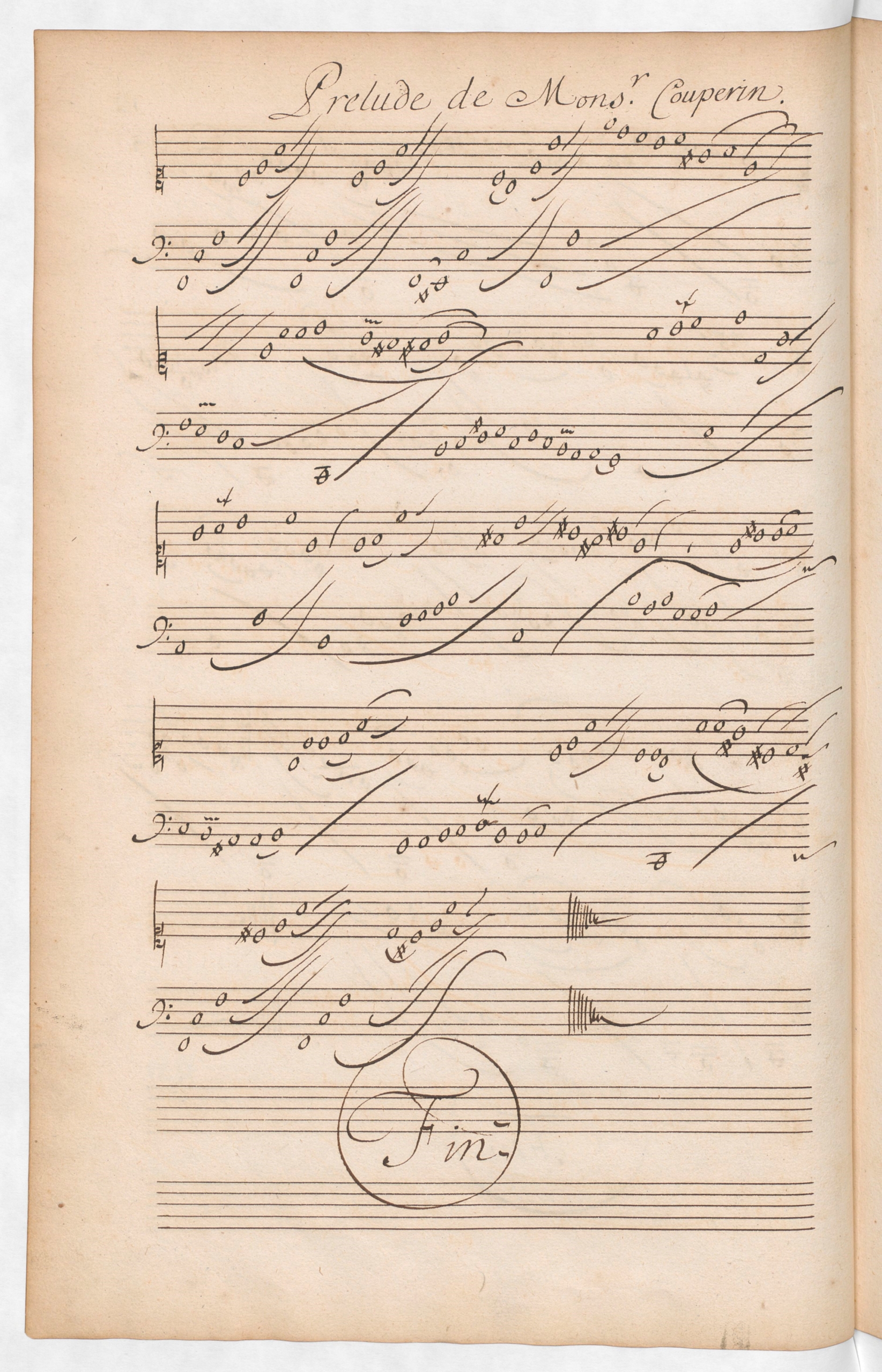
Figure 3 Bibliothèque nationale de France, Rés. Vm7 675, fol. 12v, Prelude de Monsr. Couperin. « Source gallica.bnf.fr / Bibliothèque nationale de France »
In my own transcription of Couperin’s A minor Prelude (see Example 3), an analytical approach also plays a part. The fundamental method is to first identify the bass notes that shape the harmonic movement, and then to differentiate the harmonic from the non-harmonic notes, including the melodic notes and ornaments. In this prelude, the non-harmonic notes are mainly of two types: (1) melodic links between chords, and (2) appoggiaturas. For this short prelude, the transcription process is largely straightforward. In addition to all the original curves indicating holding notes (tenues), I have inserted additional dotted lines to indicate which notes are to be held, and for how long. I have also inserted a few vertical lines between phrases, where the performer can introduce imperceptible silences, following François Couperin’s advice as given above. Although each pair of appoggiaturas in lines 1 and 3–4 is routinely notated as a quaver followed by a semibreve, it does not necessarily follow that all pairs have to be rhythmically interpreted in a ‘short-long’ manner. The harpsichordist should give variety to the performance according to ‘le bon goût’.[16]
Couperin’s Prelude no. 10 in C major contains additional ornaments and imitative gestures that are readily elucidated by the semi-measured notation (see Example 4). In addition, the tremblement (trill), the pincé (mordent) and the port de voix (appoggiatura) are found to be the most important ornaments used by Couperin. Significantly, the ports de voix in Couperin’s preludes achieve much more than simply garnishing the melody. They permeate all layers of the texture, and fulfil an expressive function by adding harmonic spices and regulating the flow with waves of tensions and relaxations. In line 5 of this prelude (see Figure 4), Couperin strongly demonstrates his adeptness in simulating a rich sonority by using interlocking ports de voix within a contrapuntal texture. In the original unmeasured notation, the repeated notes of ports de voix are sometimes spread widely apart horizontally (for example, the three g’-sharps in lines 6–7). In playing the piece, however, the performer has the discretion to bring these notes together (Audio 1, 00:47–01:08). In cases like this, the mixed notation can guide the performer better by revealing how these ports de voix fit into the musical fabric. In addition to the ports de voix, passing notes and melodic links are converted to quavers, and longer melodic threads are beamed into groups to enhance shapes and directions (lines 9–12).
Audio 1 Recording of Louis Couperin, Prelude in C major, from my live performance at Churchill College Recital Room, Cambridge on 9 March 2016.
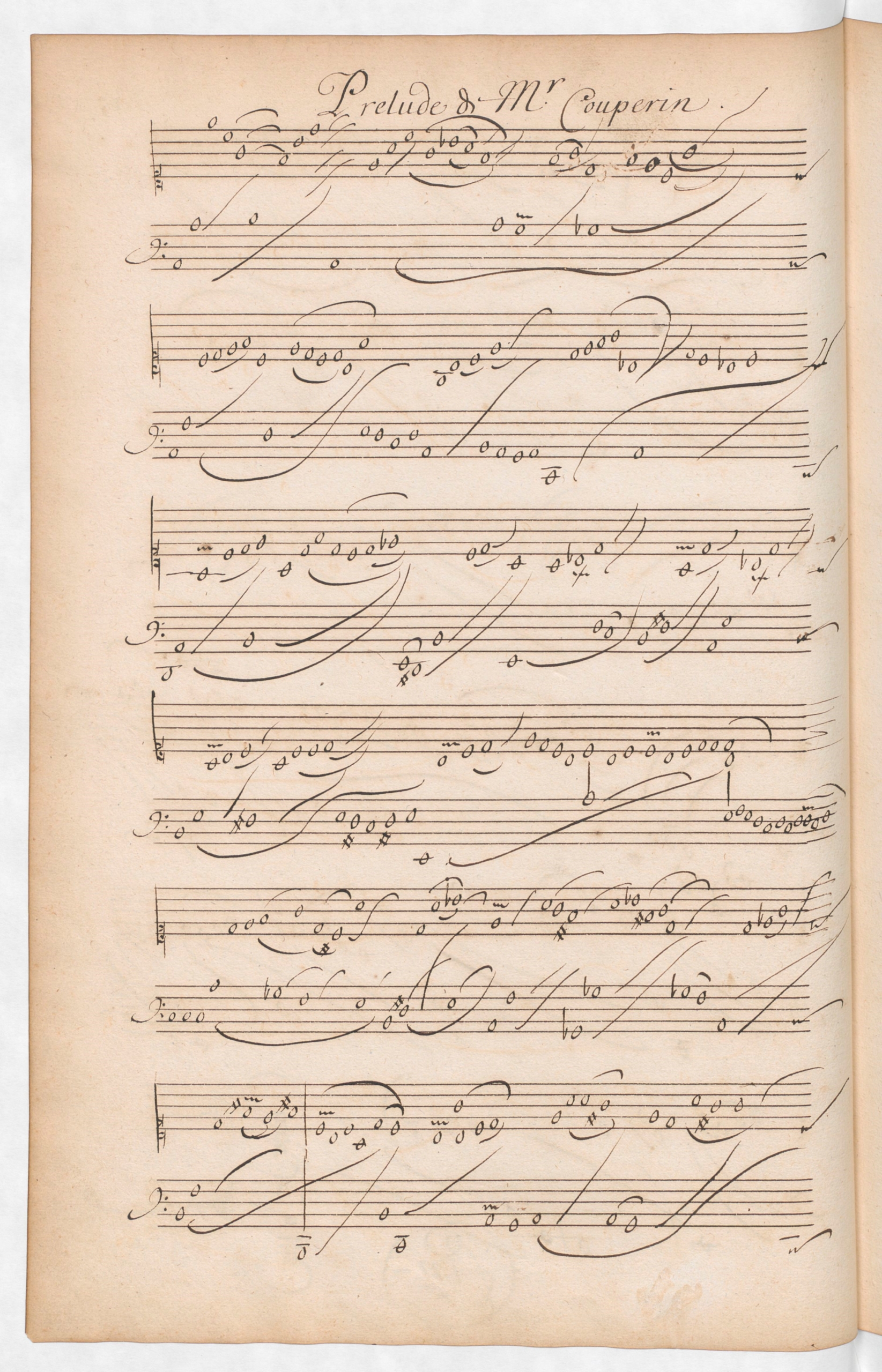
Figure 4 Bibliothèque nationale de France, Rés. Vm7 675, fol. 15v, Prelude d[e] Mr. Couperin. « Source gallica.bnf.fr / Bibliothèque nationale de France »
Reflections
Having described some of the issues involved in transcribing Couperin’s preludes, I should like to reflect on the possible benefits of the semi-measured notation, and to do so by focusing on four main issues. These issues concern the whys, hows, pros and cons of this study.
Why create a mixed notation?
The original notations that survive in professional manuscripts are hard for most learners to understand, and this difficulty is readily apparent in the notations of 17th-century musicians. In printed publications, starting with those of D’Anglebert, virtually all composers (Clérambault, Le Roux, Jean-Philippe Rameau, et al.) applied some sort of semi-measured notation for their preludes. Although the details of the notation could vary from composer to composer, all of these semi-measured notations succeeded in conveying the structure of their pieces by using mixed-value notes, a variety of ornament symbols, and both curved and straight lines.
In his l’Art de toucher le clavecin (Paris, 1717), François Couperin explained his motivation for publishing his eight preludes in measured time, writing as follows:[17]
Although these Preludes are written in measured time, there is, nevertheless, a style, dictated by custom, which must be observed. I will explain what I mean. A Prelude is a free composition, in which the imagination gives rein to any fancy that may present itself. But as it is rather rare to find geniuses capable of production on the spur of the moment, those who have recourse to these measured Preludes should play them in an easy style, not sticking too closely to the exact time, unless I have expressly indicated this by the word ‘Mesuré’. Thus, one may say that in many things, Music (as compared with Poetry) has its prose, and its verse.
One of the reasons why I have written these Preludes in measured time was to make them easier, as will be found to be the case, whether in teaching them, or in learning them.
Quoy que ces Préludes soient ècrits mesurés, il y a cependant un gout d’usage qu’il faut suivre. Je m’explique. Prélude, est une composition libre, ou l’imagination se livre à tout ce qui se prèsente à elle. Mais, comme il est assés rare de trouver des genies capables de produire dans l’instant ; Il faut que ceux qui auront recours a ces Préludes=réglés, les joüent d’une maniere aisée sans trop s’attacher à la précision des mouvemens ; à moins que je n’aÿe marqué exprés par le mot de, Mesuré : ainsi, on peut harzarder de dire, que dans beaucoup de choses, la Musique (par comparaison à la Poésie) a sa prose, et ses Vers.
Une des raisons pour laquelle j’ai mesuré ces Preludes, ça été la facilité qu’on trouvera, soit à les enseigner, ou à les apprendre.
Unfortunately, Louis Couperin did not live long enough to see his harpsichord music printed. He died prematurely in 1661, and the first French harpsichord music was published 1670.[18] If he had been given a chance to edit his preludes for publication, it is very likely that Couperin would have deployed a mixed notation, similar to that devised by D’Anglebert and his contemporaries. As discussed above, D’Anglebert was the only composer who provided us with both unmeasured versions (in his autograph) and mixed notation versions (in print) of his preludes. As such, developing a mixed notation of Louis Couperin’s preludes, based on D’Anglebert’s printed model, seems to be a suitable method for penetrating the minds of 17th-century musicians.
What does the transcription process involve?
The transcription process basically involves three main steps:
- Identifying the bass notes that give harmonic support and direction to the music
- Establishing the harmonic structure, with attention to the voice-leading and possible points of cadence
- Distinguishing the melodic elements, ornaments (in particular the appoggiaturas) and the imitative gestures
The process of differentiating notes into structural and non-structural categories, and of reorganising these notes visually, is neither easy nor automatic. The task requires much rethinking, interpreting and some degree of speculating since, without bar-lines or conventional rhythmic notations, decisions on how notes should be distributed horizontally and vertically require both discernment and taste. In this regard, the process of transcribing preludes is similar to that of preparing for performances. Every performance requires an effort to transcribe the notation into sound.
Pros
A mixed notation based on D’Anglebert’s model allows the performer to visualise how melodic ingredients, ornaments and imitative gestures fit into the harmonic-contrapuntal framework. This semi-measured version may help to facilitate the learning process, and to guide the performer toward making decisions critical to their interpretation. Although the notes are assigned a variety of values, the mixed notation still preserves the poetic quality and the rhythmic freedom of the original notation. In other words, it is still down to the performer’s discretion to decide which notes to linger on for added expressiveness, which to precede with a short delay to create surprises, and when to hurry on or to broaden out the tempo.
Personally, I find that re-editing Couperin’s preludes à la D’Anglebert stimulates my creativity as a performer and opens up a new perspective for understanding this music. The ultimate goal is to perform the music, and the process of transcribing these preludes allows me to decipher some of the mysteries of this repertory. It allows me to develop an interpretation that integrates knowledge, skill and imagination.
Cons
Clearly, there is some danger that my transcriptions of Couperin’s preludes could distort the original intentions of the composer, whatever those intentions might have been. The mixed-notation version is not an ‘Urtext’ edition, and it is, at best, an historically-informed reconstruction of how Couperin might have edited his own preludes. This edition assumes that Couperin would adopt procedures similar to those of his colleague and near-contemporary, D’Anglebert, who was the only composer to have provided us with a useful model for transcribing preludes from free to mixed notation. Professional harpsichordists would probably prefer to play either from facsimiles of original manuscripts or from one of the available critical editions. However, both of the manuscript sources for these preludes (Bauyn and Parville) were compiled over two decades after they were first written, and apparently neither of them stems directly from the lost originals.[19] As a result of the discrepancies between the two sources, all modern editions vary in matters small and large, and the lack of a definitive text will continue to intrigue performers for some time into the future. My purpose in creating a semi-measured version is simply to offer another perspective for learning, playing and exploring this treasured repertory, and to share my experience of engaging with it.
Conclusion
By playing Couperin’s preludes using the semi-measured version, and by comparing the mixed notation version with Couperin’s ‘originals’ in both Bauyn and Parville, it becomes apparent that the semi-measured notation highlights an otherwise hidden relationship between the structure and the musical details. With this notation, the ornaments, gestures and other idiomatic effects can be instinctively discerned. The semi-measured notation also provides contextualising information for the performer to make decisions on critical matters, such as which notes to sustain and which notes to linger on for greater expressivity. Interestingly, the semi-measured notation is still flexible enough for individual performers to carve out unique performances. For the researcher, the transcription process is also a reflective one. It opens up an additional perspective on the creative processes of the 17th– century mind, and it proves extremely beneficial for both teaching and performing this music.
Endnotes
[1] For discussions of Couperin’s lines and their possible interpretations, see Bruce Gustafson, ‘Shapes and Meanings of Slurs in Unmeasured Harpsichord Preludes: An Editorial Policy Presented for Comment’, French Baroque Music: A Newsletter, 2 (1984), pp. 20–22; Davitt Moroney, ed., Louis Couperin: Pièces de clavecin (Monaco: L’Oiseau-Lyre, 1985), pp. 11–16; and Paul Prévost, Le Prélude non mesuré pour clavecin (France 1650–1700) (Baden-Baden and Bouxwiller: Editions Valentin Koerner, 1987), pp. 100–104. Two doctoral dissertations on Louis Couperin’s preludes have recently been completed: (1) Anne Chapelin-Dubar, ‘Les Préludes non mesurés de Louis Couperin: de l’interprétation des sources à l’interprétation au clavecin’ (unpublished doctoral dissertation, Université Jean Monnet de Saint Étienne, 2007), and (2) Philip C. C. Chang, ‘Analytical and Performative Issues in Selected Unmeasured Preludes by Louis Couperin’ (unpublished doctoral dissertation, University of Rochester, 2011).
[2] See Bruce Gustafson, ‘A Letter from Mr Lebègue Concerning His Preludes’, Recherches sur la musique française classique, 17 (1977), pp. 9–11.
[3] A facsimile of the Bauyn manuscript (Bibliothèque nationale de France, Rés. Vm7 674–5) is now available from the Gallica, the online library of the Bibliothèque nationale de France (gallica.bnf.fr).
[4] Louis Couperin’s preludes have been published in collections edited by Alan Curtis (Paris: Heugel, 1970), Davitt Moroney (Monaco: L’Oiseau-Lyre, 1985), Colin Tilney (London: Schott, 1991), Glen Wilson (Wiesbaden: Breitkopf & Härtel, 2003), Anne Chapelin-Dubar (Bourg-la-Reine: Editions Aug. Zurfluh, 2010) and Bruce Gustafson (New York: The Broude Trust, 2014). In general, these editors have disagreed over whether some of these lines should be curved or straight, where they begin and end, and whether the notes are connected or separated by certain lines. For a discussion of the different approaches used by various editors, see David Chung, ‘The port de voix in Louis Couperin’s Unmeasured Preludes: A Study of Types, Functions and Interpretation’, in Performers’ Voices Across Centuries and Cultures, Anne Marshman, ed., (London: Imperial Press, 2011), pp. 70–77.
[5] Colin Tilney’s edition, The Art of the Unmeasured Prelude for Harpsichord, France 1660–1720 (London: Schott, 1991) provides both facsimiles and modern transcriptions of all 16 preludes by Couperin, 26 preludes in printed collections by composers such as Nicolas Lebègue, Jean Henry D’Anglebert, Louis Nicolas Clérambault, Louis Marchand and Gaspard Le Roux, and 21 anonymous preludes in manuscript sources.
[6] David C. Harris, ‘Performing D’Anglebert’s Works for Keyboard’, in Jean Henry D’Anglebert: The Collected Works (New York: The Broude Trust, 2009), vol. ii, p. 127, describes these notes as ‘void, stemless noteheads’, as they do not designate any specific duration.
[7] David C. Harris, ‘Performing D’Anglebert’s Works’, vol. ii, pp. 127–133.
[8] D’Anglebert’s 1689 work, Pièces de clavecin, includes a table of ornaments listing 29 symbols (marques des agréments) and their realisations (signification). See Ronald Broude, ‘Paris chez l’auteur: Self-publication and Authoritative Texts in the France of Louis XIV’, Early Music, 45 (2017), pp. 287–288, for a discussion of ornament tables in printed collections by D’Anglebert and his contemporaries.
[9] François Couperin, Troisième Livre de pièces de clavecin … Concerts royaux (Paris, 1722), Preface.
[10] Christopher Wood, ‘Unmeasured Prelude for the Harpsichord’, The Consort, ix (1952), pp. 26–28.
[11] Howard Ferguson, Keyboard Interpretation from the 14th to the 19th Century (Oxford: Oxford University Press, 1975), pp. 24–25, reproduced in Chang, ‘Analytical and Performative Issues’, Examples 6–5.
[12] Newman Wilson Powell, ‘Rhythmic Freedom in the Performance of French Music from 1650 to 1735’ (unpublished doctoral dissertation, Stanford, CA: Stanford University, 1959), p. 251; and Christel Pfeiffer, ‘Das französische Prelude non mesuré für Cembalo’ in Neue Zeitschrift für Musik, 140:2 (1979), pp. 132–136. Both transcriptions are reproduced in Chang, ‘Analytical and Performative Issues’, Examples 6–6 and 6–7.
[13] Richard Troeger, ‘The French Unmeasured Harpsichord Prelude: Notation and Performance’, Early Keyboard Journal, 10 (1992), p. 111.
[14] Richard Troeger, ‘The Unmeasured Preludes of Louis Couperin’ (unpublished doctoral dissertation, Rochester, YY: University of Rochester, 1982), reproduced in Chang, ‘Analytical and Performative Issues’, Examples 6–8.
[15] The two other preludes transcribed by Chang (in ‘Analytical and Performative Issues’) are the C major prelude (Moroney no. 10) and the E minor prelude (Moroney no. 14). Chang’s analytical study focusses on two areas of Couperin’s preludes: rhythm and tonality.
[16] François Couperin, L’Art de toucher le clavecin (Paris, 1717), p. 61.
[17] Couperin, L’Art de toucher le clavecin, p. 60.
[18] Rebecca Cypess, ‘Chambonnières, Jollain and the First Engraving of Harpsichord Music in France’, Early Music, 35 (2007), p. 544.
[19] For an in-depth discussion of the dating of the Bauyn manuscript, see Bruce Gustafson, ed., Paris, Bibliothèque nationale de France, Rés Vm7674–675: The Bauyn Manuscript. (New York: The Broude Trust, 2014), vol. iv, pp. 3–7 and pp. 14–16; and Bruce Gustafson, ‘Four Decades after French Harpsichord Music of the Seventeenth Century: Newly Discovered Sources’, in Perspectives on Early Keyboard Music and Revival in the Twentieth Century, Rachelle Taylor and Hank Knox, eds. (London and New York: Routledge, 2018), p. 25. Parville is dated after the keyboard transcriptions of Jean-Baptiste Lully’s Acis et Galatée (1686). See Bruce Gustafson, French Harpsichord Music of the 17th Century: A Thematic Catalog of the Sources with Commentary (Ann Arbor: UMI Research Press, 1979), vol. ii, p. 42.

